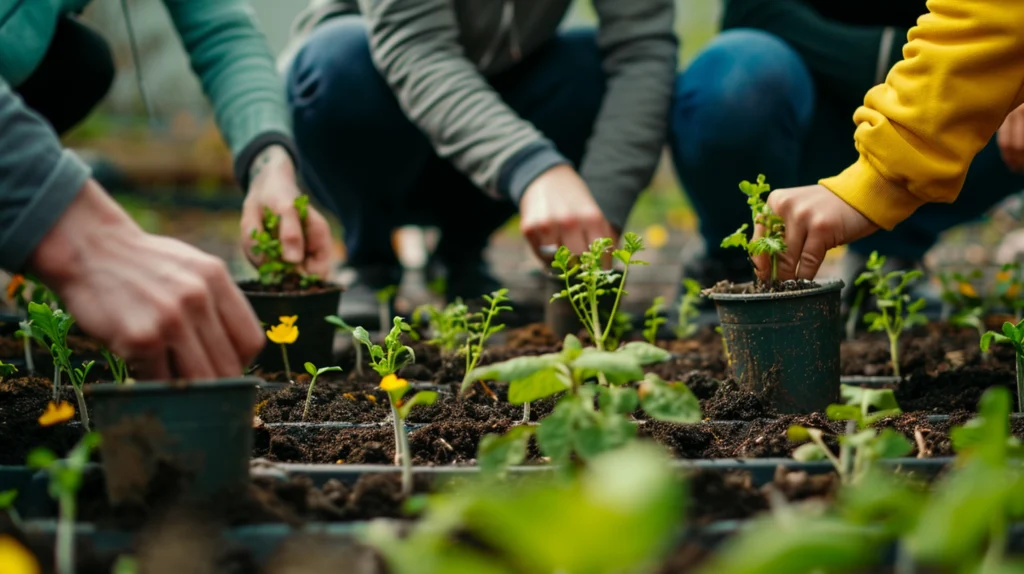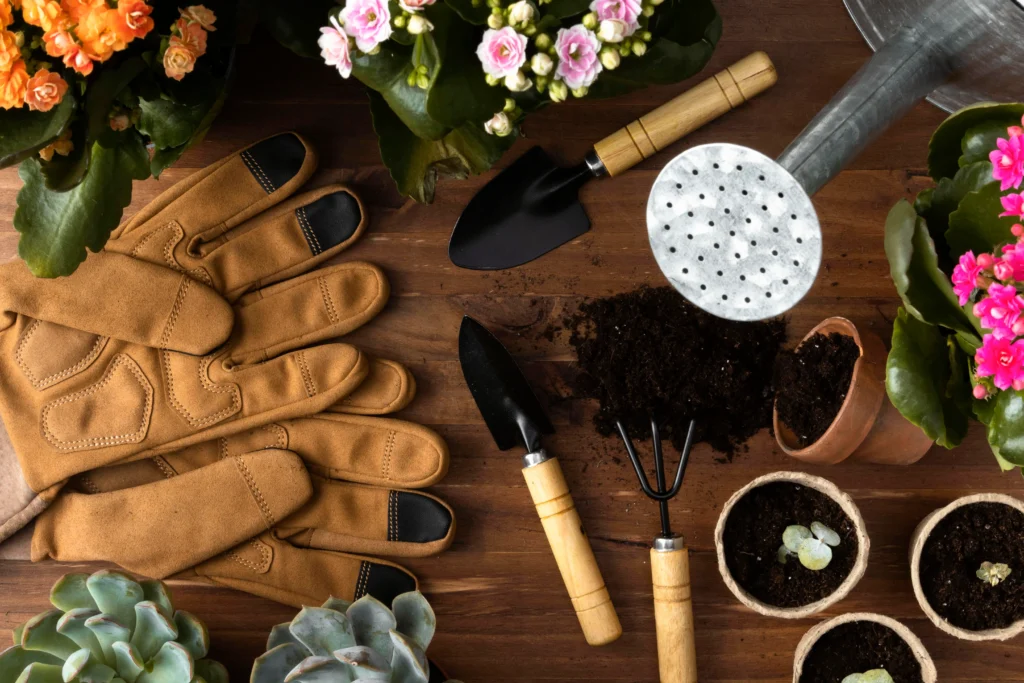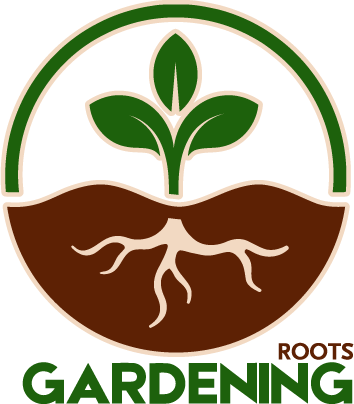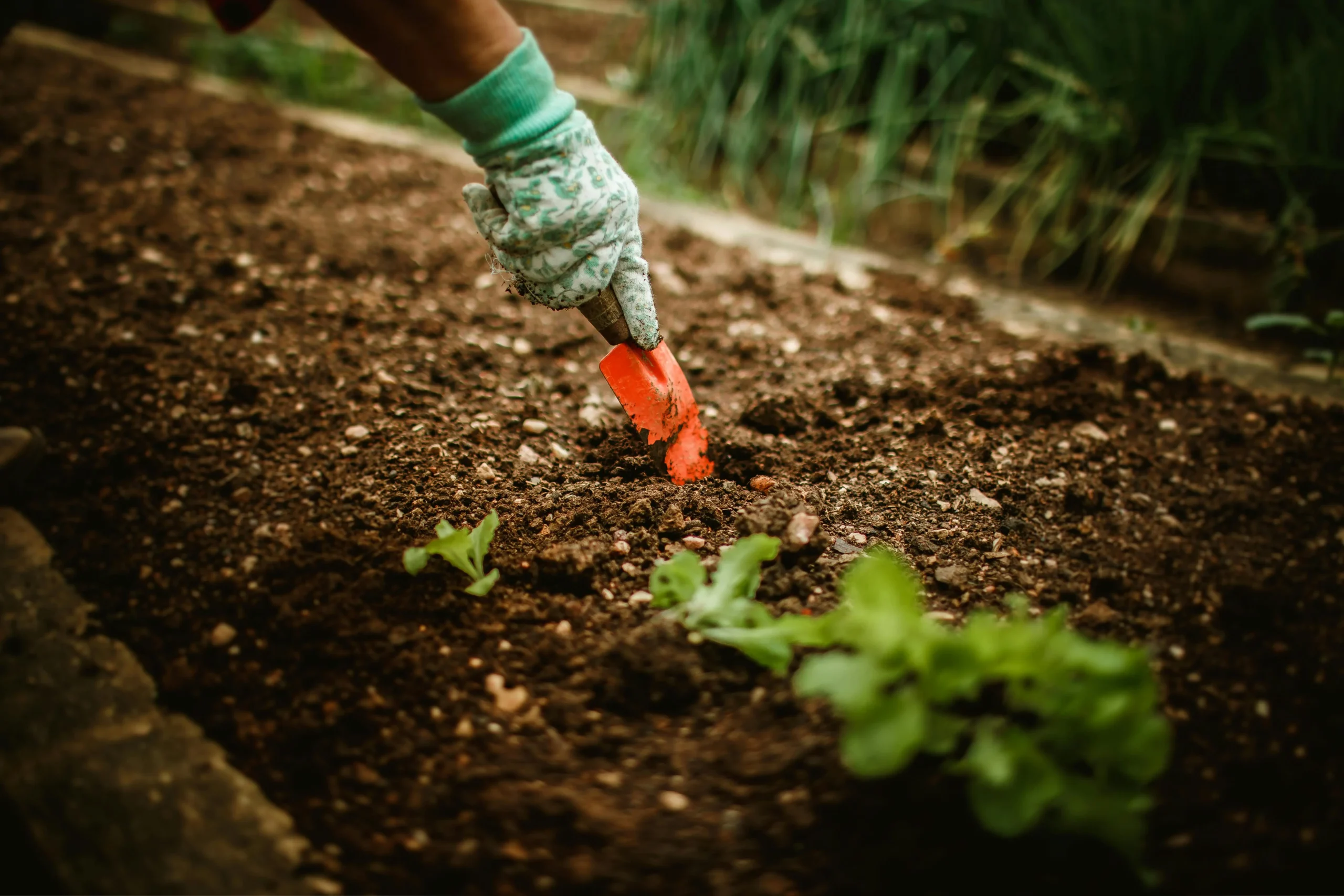Table of Contents
Start your gardening journey with confidence! The Gardening 101 guide will teach you the basics of gardening. Whether you’re starting your first garden or want to improve your skills, you’re in the right place. You’ll learn about choosing the right plants, watering, and pest management.

Understanding your local climate is key to a successful garden. Knowing your planting zone helps you pick the best plants for your area. You’ll also learn about annuals, perennials, shrubs, and trees to create a beautiful garden.
Watering is essential for healthy plants. You’ll discover different watering methods and how to keep your garden moist. Plus, you’ll find out how to manage pests without harming the environment.
This guide also covers fertilizing and sustainable gardening. You’ll learn about composting and saving water. By the end, you’ll be ready to create a thriving garden that brings you joy for years.
Key Takeaways
- Understand your local planting zone and climate to select the best plants for your garden
- Explore the differences between annuals, perennials, shrubs, and trees to create a balanced garden design
- Establish an effective watering system to keep your plants healthy and hydrated
- Implement organic pest management strategies to maintain a beautiful, bountiful garden
- Leverage sustainable gardening practices, such as composting and water conservation, for long-term success
Know Your Planting Zone
Unlocking the secrets to successful gardening starts with understanding your local planting zone. The USDA Hardiness Zone map categorizes North America into 13 distinct zones, each determined by average annual minimum winter temperatures. This tool is essential for identifying which plants are best suited to thrive in your particular climate.
USDA Hardiness Zones
Each hardiness zone shows a 10-degree Fahrenheit difference in average annual minimum temperature. Knowing your zone helps you pick plants that fit your region’s growing conditions. This ensures they survive the winter months. It’s key to choosing the right plants, shrubs, and trees for your garden.
Every hardiness zone represents a 10-degree Fahrenheit variation in average annual minimum temperatures. By understanding your specific zone, you can select plants well-suited to your area’s growing conditions, ensuring they can withstand the winter. This knowledge is essential for choosing appropriate plants, shrubs, and trees for your garden.
Climate Considerations
Beyond temperature, climate considerations like rainfall, humidity, and frost dates are vital. Understanding your local weather and growing season helps with watering and plant selection. It also helps you adapt your gardening conditions for the best results.
| Climate Factor | Importance for Gardening |
|---|---|
| Average Annual Minimum Temperature | Determines which plants can survive the winter |
| Rainfall | Impacts water requirements and drought-tolerance of plants |
| Humidity | Affects the susceptibility of plants to pests and diseases |
| Frost Dates | Guides the timing of planting and harvesting |
By knowing your zone and considering your local climate, you’ll create a thriving garden. It will flourish in your unique environment.
Use the USDA Plant Hardiness Zone Map to find your local climate zone, which can help you choose plants best suited to your area’s temperature range.
Selecting the Right Plants
Choosing the right plants is key to a thriving garden. You have annuals that bloom once and perennials that come back every year. These choices greatly affect your garden’s look and health.
Annuals vs. Perennials
Annuals like marigolds and zinnias add color but need replanting each year. Perennials, such as daylilies, come back stronger after winter. Mixing both in your garden keeps it colorful and interesting all season.
Shrubs and Trees
Shrubs and trees add structure and shade to your garden. They come in many types, like hydrangeas and maples. Pick them based on size, sun needs, and local growing conditions for the best results.
For a great garden, choose the right plant selection. Mix annuals, perennials, shrubs, and trees for beauty and ease. Visit your garden center to find the perfect plants for your garden.
Establishing a Watering System
To keep your garden lush and healthy, you need a good watering plan. You can choose to water by hand or use an irrigation system. Knowing what your garden needs is key to keeping plants healthy and saving water.
Hand watering lets you really connect with your garden. It helps you check the soil and adjust when to water. This way, you avoid too much water and root rot.
An irrigation system, like a drip system, is efficient and steady. It waters plants right at the roots, saving water and helping plants grow well. Think about using mulch and grouping plants to save water in your garden design.
| Watering Approach | Pros | Cons |
|---|---|---|
| Hand Watering | Allows for close monitoring of soil moisture Fosters a personal connection with the garden | Time-consuming and labor-intensive Potential for inconsistent watering |
| Irrigation System | Efficient water delivery to plant roots Consistent watering schedule potential for water conservation | Initial installation cost Requires regular maintenance |
Choosing how to water your garden is important. It’s about finding a balance between watering your plants right and saving water. With a smart watering system and water-saving tips, your garden will stay healthy and green for a long time.
Pest Management Strategies
To keep your garden healthy, you need to fight pests. Learn about pests like aphids, slugs, and Japanese beetles. Use organic methods to protect your garden and keep the ecosystem balanced.
Common Garden Pests
Many pests can harm your plants. Here are some common ones:
- Aphids: These tiny insects suck sap from plants, slowing growth and spreading disease.
- Slugs: They eat leaves, stems, and fruits, causing damage.
- Japanese Beetles: These beetles eat leaves and flowers, damaging your garden.
Organic Pest Control Methods
Instead of chemicals, try organic pest control methods. They keep pests away while keeping your garden healthy:
- Bring in Beneficial Insects: Ladybugs, lacewings, and praying mantis to eat pests.
- Use Natural Repellents: Sprays or powders from garlic, chili peppers, or essential oils keep pests away.
- Hand-Pick Pests: Check your plants often and remove pests like caterpillars or slugs.
Knowing about pests and using green methods helps your garden grow. This way, you support a sustainable gardening and homestead gardening ecosystem.
Fertilizing for Optimal Growth
Fertilizing is key to a thriving garden. Knowing what nutrients plants need and how to use them is vital. The right fertilizers improve soil quality and help plants grow strong.
Understanding Plant Nutrients
Plants require a combination of macronutrients and micronutrients for optimal growth. The primary macronutrients include nitrogen (N), phosphorus (P), and potassium (K). Nitrogen promotes leaf development, phosphorus supports root and flower growth, and potassium enhances overall plant health.
Micronutrients like iron, calcium, magnesium, and boron are also vital but in smaller amounts. They help with things like making chlorophyll and activating enzymes.
- Nitrogen (N) – Promotes green, leafy growth
- Phosphorus (P) – Supports root and flower development
- Potassium (K) – Enhances plant vigor and disease resistance
- Micronutrients – Iron, calcium, magnesium, boron, and others
| Nutrient | Function | Deficiency Symptoms |
|---|---|---|
| Nitrogen (N) | Promotes green, leafy growth | Stunted growth, yellowing leaves |
| Phosphorus (P) | Supports root and flower development | Reduced flowering, poor root growth |
| Potassium (K) | Enhances plant vigor and disease resistance | Leaf edges turn brown, reduced drought tolerance |
| Iron (Fe) | Aids in chlorophyll production | Yellowing between leaf veins |
Knowing what your plants need and the soil’s characteristics helps you choose the right fertilizers. This way, you can create a healthy and vibrant garden.
Gardening 101: Tips for Beginners
Starting your gardening journey can seem overwhelming. But, with some basic tips, you can do great. Learn about your growing season, how to care for your plants and the importance of good soil. These tips will help you grow a beautiful garden.
Knowing your garden’s growing season is key. Understand your local climate and weather. This will tell you when to plant, how often to water, and which plants will do well.
When picking plants, do your homework. Know if they’re annuals or perennials. Learn what they need in terms of sunlight, water, and soil. This ensures they grow well.
Keeping your garden in good shape is vital. Check for pests and diseases often. Regularly weed, mulch, and water correctly. This keeps your garden healthy and lively.
Lastly, enjoy your gardening wins, no matter how small. Feel happy when your plants grow well. With these tips, you’ll become a skilled gardener.
| Gardening Tip | Benefit |
|---|---|
| Understand your growing season | Plan planting, watering, and other gardening activities based on your local climate |
| Research plant needs | Ensure your plants receive the right amount of sunlight, water, and soil conditions to thrive |
| Maintain your garden regularly | Identify and address any issues with pests, diseases, or overall plant health |
| Celebrate your successes | Take pride in the beauty you’ve created and stay motivated to continue improving your gardening skills |
Essential Gardening Tools
Gardening is a rewarding hobby that needs the right tools for success. Whether you’re experienced or new, knowing the essential tools is key. It helps keep your garden thriving and sustainable.
Hand Tools
Begin with a set of hand tools for common tasks. Choose high-quality, ergonomic pruners, trowels, hoes, and shovels. These tools are essential for weeding, planting, and shaping your plants.
- Pruners: Ideal for trimming and shaping plants, shrubs, and trees.
- Trowels: Perfect for planting seedlings, bulbs, and transplanting smaller plants.
- Hoes: Essential for breaking up soil, removing weeds, and creating furrows for planting.
- Shovels: Versatile for digging, turning soil, and transplanting larger plants.
Power Tools

For bigger gardening projects, power tools can be a big help. A reliable lawn mower keeps your grass neat, and a tiller prepares garden beds. Look for eco-friendly, sustainable power tools that fit your green gardening goals.
Choose quality, ergonomic tools, whether hand or power. Look for sustainable options that match your eco-friendly gardening values.
Sustainable Gardening Practices
Using sustainable gardening methods can make your garden eco-friendly and easy to care for. Composting turns food and yard waste into soil that feeds your plants. Water-saving steps, like picking plants that need less water and using smart irrigation, cut down on water use. These actions help your garden and the planet.
Composting
Composting turns waste into a treasure for your garden. It breaks down food scraps, yard clippings, and leaves into a soil booster. This not only cuts down on landfill waste but also makes your soil rich and full of life.
Water Conservation
Conserving water is key in gardening, more so in dry areas. Choosing plants that don’t need much water and using smart irrigation helps. Rainwater harvesting is another way to save water. These steps keep your garden green without harming the environment.
FAQ
What is the importance of knowing your USDA hardiness zone?
Knowing your USDA hardiness zone is key to gardening success. The USDA Hardiness Zone map divides North America into 13 zones. It shows average winter temperatures, helping you pick plants that will grow well in your climate.
How do I choose the right plants for my garden?
Think about whether you want annuals or perennials. Annuals grow and die in one season, Perennials, on the other hand, return each year. Incorporating shrubs and trees adds structure and provides shade to your garden.
Choose plants that match your local conditions, like sun and water needs. Make sure they fit your garden design.
What are the best watering techniques for a healthy garden?
Watering right is vital for plants. Decide if you’ll water by hand or use an automated system. Avoid too much water to prevent root rot.
Use mulch and group plants to save water. These steps help conserve this valuable resource.
How do I manage common garden pests effectively?
Learn about pests like aphids, slugs, and Japanese beetles. Use organic methods to control them, like beneficial insects and natural repellents. Hand-picking is also effective.
Using sustainable pest control helps protect your plants and supports a healthy ecosystem.
What is the importance of proper fertilization for my garden?
Fertilizing right helps plants grow well. Know the nutrients plants need for growth. Choose the right fertilizer for your soil and plants.
Apply it correctly to avoid harming your plants. This ensures they get what they need without too much.
What are some essential tips for beginner gardeners?
Pay attention to your garden’s growing season. Plan your plantings and care for your plants and soil. Watch your garden and fix problems quickly.
Enjoy your gardening journey and celebrate your successes.
What are the essential gardening tools I should have?
Get a basic set of hand tools like pruners, trowels, and hoes. Power tools like lawnmowers are useful for big jobs. Choose durable, ergonomic tools that are good for the environment.
How can I incorporate sustainable gardening practices?
Sustainable gardening makes your garden eco-friendly and easy to care for. Compost to enrich your soil. Use water-saving plants and efficient irrigation systems.
These practices help your garden and the environment. They make your garden healthier and more resilient.

